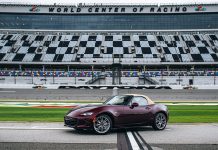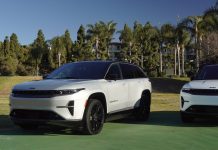The addition of a retractable roof makes this Artura the one to pick.
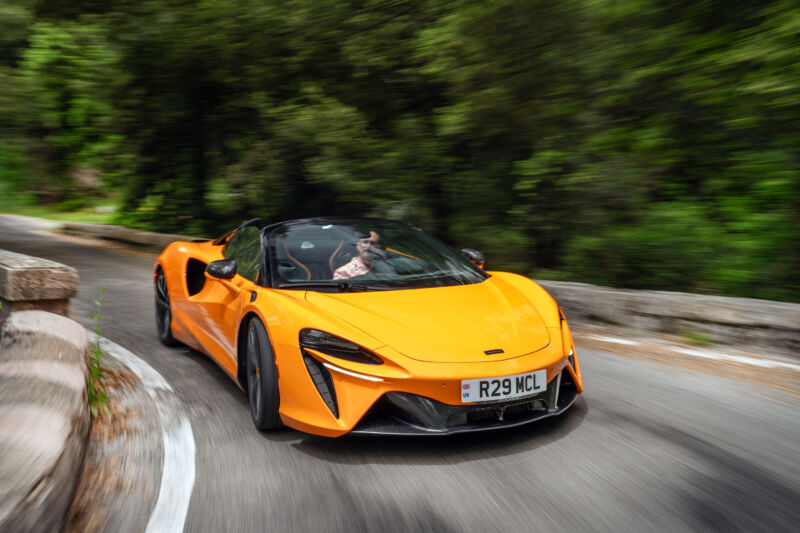
Enlarge / The introduction of model year 2025 brings a retractable hard-top option for the McLaren Artura, plus a host of other upgrades.
MONACO—The idea of an “entry-level” supercar might sound like a contradiction in terms, but every car company’s range has to start somewhere, and in McLaren’s case, that’s the Artura. When Ars first tested this mid-engined plug-in hybrid in 2022, It was only available as a coupe. But for those who prefer things al fresco, the British automaker has now given you that option with the addition of the Artura Spider.
The Artura represented a step forward for McLaren. There’s a brand-new carbon fiber chassis tub, an advanced electronic architecture (with a handful of domain controllers that replace the dozens of individual ECUs you might find in some of its other models), and a highly capable hybrid powertrain that combines a twin-turbo V6 gasoline engine with an axial flux electric motor.
More power, faster shifts
For model year 2025 and the launch of the $273,800 Spider version, the engineering team at McLaren have given it a spruce-up, despite only being a couple of years old. Overall power output has increased by 19 hp (14 kW) thanks to new engine maps for the V6, which now has a bit more surge from 4,000 rpm all the way to the 8,500 rpm redline. Our test car was fitted with the new sports exhaust, which isn’t obnoxiously loud. It makes some interesting noises as you lift the throttle in the middle of the rev range, but like most turbo engines, it’s not particularly mellifluous.
ADVERTISING
- The new engine map means the upper half of third gear will give you a real shove toward the horizon. McLaren
- The Artura Spider’s buttresses are made from a lightweight and clear polymer, so they do their job aerodynamically without completely obscuring your view over your shoulder. McLaren
- The Artura Spider is covered in vents and exhausts to channel air into and out of various parts of the car. McLaren
- You could have your Artura Spider painted in a more somber color. But Orange with carbon fiber looks pretty great to me.
- If you look closely, you can see the transmission hiding behind the diffuser. Jonathan Gitlin

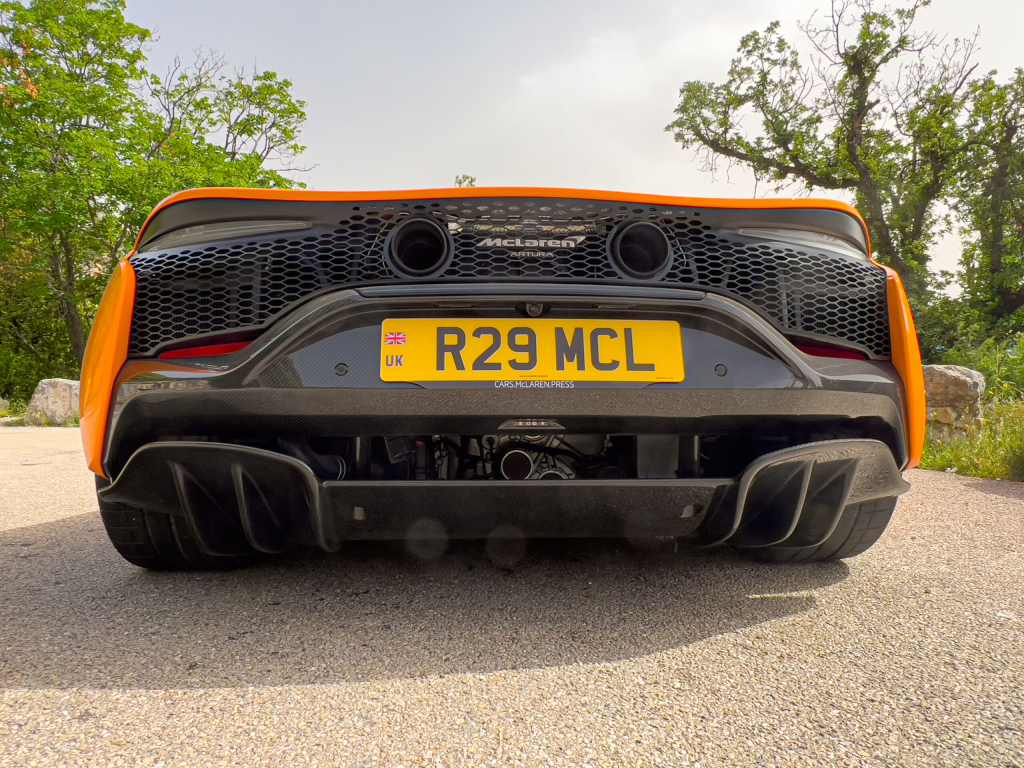
Combined with the 94 hp (70 kW) electric motor, that gives the Artura Spider a healthy 680 hp (507 kW), which helps compensate for the added 134 lbs (62 kg) due to the car’s retractable hard top. There are stiffer engine mounts and new throttle maps, and the dual-clutch transmission shifts 25 percent faster than what we saw in the car that launched two years ago. (These upgrades are carried over to the Artura coupe as well, and the good news for existing owners is that the engine remapping can be applied to their cars, too, with a visit to a McLaren dealer.)Advertisement
Despite the hybrid system—which uses a 7.4 kWh traction battery—and the roof mechanism, the Artura Spider remains a remarkably light car by 2024 standards, with a curb weight of 3,439 lbs (1,559 kg), which makes it lighter than any comparable car on the market.
In fact, picking a comparable car is a little tricky. Ferrari will sell you a convertible hybrid in the shape of the 296 GTS, but you’ll need another $100,000 or more to get behind the wheel of one of those, which in truth is more of a competitor for the (not-hybrid) 750S, McLaren’s middle model. Any other mid-engined drop-top will be propelled by dino juice alone.
What modes do you want today?

You can drive it using just the electric motor for up to 11 miles if you keep the powertrain in E-mode and start with a fully charged battery. In fact, when you start the car, it begins in this mode by default. Outside of E-mode, the Artura will use spare power from the engine to top up the battery as you drive, and it’s very easy to set a target state of charge if you want to save some battery power for later, for example. Plugged into a Level 2 charger, it should take about 2.5 hours to reach 80 percent.
The car is light enough that 94 hp is more than adequate for the 20 mph or 30 km/h zones you’re sure to encounter whether you’re driving this supercar through a rural village or past camera-wielding car-spotters in the city. Electric mode is serious, and the car won’t fire up the engine until you switch to Comfort (or Sport, or Track) with the control on the right side of the main instrument display.
On the left side is another control to switch the chassis settings between Comfort, Sport, and Track. For road driving, comfort never felt wrong-footed, and I really would leave track for the actual track. The same goes for the Track powertrain setting; for the open road, Sport is the best-sounding, and comfort is well-judged for everyday use and will kill the V6 when it’s not needed. Sport and Track instead use the electric motor—mounted inside the case of the eight-speed transmission—to fill in torque where needed, similar to an F1 or LMDh race car.
ARS VIDEO
What Happens to the Developers When AI Can Code? | Ars Frontiers
The best McLaren interior yet
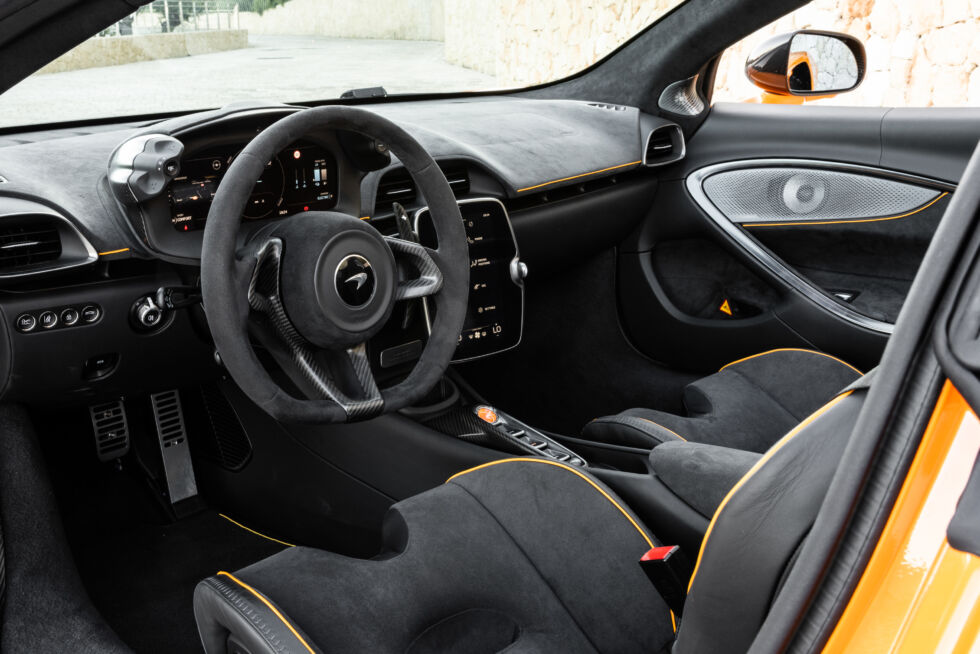
The Artura’s cabin is a real improvement over those in the company’s earlier cars, both in terms of ergonomics and how well everything is put together. You won’t find a button on the steering wheel, but there are plenty of them elsewhere, all within easy reach of the driver. In addition to the turn signals and windshield wipers, there are smaller stalks, one for controlling the multifunction area on the main instrument display (the up, down, forward, and back control method is very easy to pick up), the other for adaptive cruise control.
Adaptive cruise was a new addition to McLaren with the Artura, made possible by the more modern electronic architecture and its domain controllers. Quite a few of the improvements for MY25 can be traced to improvements there, from the new engine mapping to a 90 percent faster response rate for the adaptive dampers in the suspension. In addition to adaptive cruise, the car will detect speed limit signs and show them on the main display, and there’s blind spot monitoring and rear cross-traffic detection.
There’s also a lane-keeping warning but no lane-keeping assist; McLaren is sticking with hydraulic power steering for now, much to the delight of anyone who enjoys good steering feel.

In addition to the little multifunction area that shows up on the main display, to the driver’s right is a portrait-oriented infotainment touchscreen. There’s a new wireless charging cubby for smartphones, as well as wired Apple CarPlay—you’ll find USB-A and -C ports in the cubby between the seats. The cubby is large enough to store some sunglasses and your phone (although the latter can get warm enough that it stops charging if you store it in there, I discovered).Advertisement
Spider means convertible
Obviously, the bigger change compared to the car we drove last year is the folding hardtop, which takes 11 seconds to open or close. You can do this at speeds of up to 31 mph (50 km/h). But even if the top is down, you won’t really get wet thanks to the way air moves over the car. The weight penalty compared to the hardtop is minimal enough, and the option of having the roof down on a nice day means I’d probably pick the Spider if I were Artura shopping.
- McLaren chose supercar central for our drive in the Artura Spider, and the car certainly turned heads in the principality. McLaren
- Little Gurneys at the corners of the windshield help deflect air over and above the cockpit so there’s no buffeting with the roof down, even at speed. McLaren
- The one-piece seats were not kind to my right butt cheek. McLaren
- The roof is quick to operate. You can also spec it with an electrochromic panel that darkens very quickly on command if things are a little too sunny out there. McLaren
- Another look at those buttresses. McLaren
- Dihedral doors always add a sense of occasion. Jonathan Gitlin


I’d probably also go for the optional comfort seats over the one-piece carbon buckets that come standard. The latter hold you in place well and may work better for larger drivers than me, but I found that after about three hours behind the wheel, they were a literal pain in the butt.
Roof down, you’ll notice some squealing from the brakes, particularly if you’re in electric mode. The brake pedal also needs a bit of a push, and while I found the pedals were perfectly spaced for left-foot braking on track last time, the footwell was a bit cramped for road driving.
The Artura Spider’s starting price is not inconsiderable, and even if you mostly leave the options list alone, you’re looking at a price starting with a “3.” But what I like about the Artura is its versatility as a supercar. Depending on the exterior color, it can look relatively low-key, or, as with the bright orange you see here, eye-catchingly bold. While it’s a little less practical for everyday use than, say, a Porsche 911, it feels unquestionably more special to drive, especially with the roof down.

